Flowers on a Veranda
Provenance: Alexandra Tomilina, the artist’s widow, Paris. Private collection, Europe. Exhibited: Larionov-Gontcharova , Galerie Beyeler, Basel, July–September 1961 (label on the reverse). Michel Larionov , Acquavella Galleries, New York, 22 April–24 May 1969, No. 6 (label on the reverse). Literature: Exhibition catalogue, Michel Larionov , Acquavella Galleries, New York, 1969, No. 6, illustrated. Flowers on a Veranda is an outstanding example of Mikhail Larionov’s early work. This idiosyncratic piece has an impeccable provenance which can be traced back to the estate of the artist’ s widow, and is a rare example (even for museum collections) of his works in oil from the early 1900s. Unlike his works in pastel and gouache, very few oils of this period have been preserved, so each is particularly precious. It is most likely that the artist painted Flowers on a Veranda after his year-long exclusion from the Moscow School of Painting, Sculpture and Architecture for sending pieces featuring “obscene content” to an exhibition of student work. Captivated by the experiments of the Impressionists which he had seen in the Moscow collection of Sergei Shchukin, Larionov was then beginning to consider himself a truly independent artist, liberated from academic didacticism. Every summer he would leave Moscow for his maternal grandmother’s home in Tiraspol, Bessarabia, where he had spent his childhood and where he now wholly devoted himself to painting from nature. The significance of these works in the artist’s creative development cannot be overestimated. He converted a wing of his grandmother’s house, with its enormous garden planted with apricot trees, into a studio, and there produced a series of canvasses, paeans to the everyday life unfolding outside his window. His best works of the first half of the 1900s are full of sunshine and greenery and depict pots of flowers, lilac bushes, geese and turkeys strolling about the yard. Stylistically these pieces, including Flowers on a Veranda , are reminiscent of his early works in which we recognise the influence of Borisov-Musatov and the plein air approach to rendering phenomena. Yet these are not studies, in the 19th century sense of the word, but finished pictures painted from nature, which are absolutely consonant with the art of the new century. In Larionov’s work of the 1900s, the question of distinguishing between a preparatory study and a finished picture does not even arise. Rather orangeries, acacias, roses wet from the rain and even pigs grow from the primary elements of a study into an autonomous painting, whilst retaining both the typically small dimensions and the dynamic paint application of a study. Flowers on a Veranda is similar in composition to the well-known 1904 work now in the Russian Museum, Still Life with Beer , in which the characteristic traits of Larionov’s celebrated works of the 1900s first appear. Despite their simplicity, the objects arranged on the veranda create a feeling of dynamic equilibrium. The pot holding the plant with luxuriant foliage emphasises the centripetal movement of the composition towards the corner of the veranda, literally dividing the picture into two practically equal halves. At the same time, the general structure of the picture is defiantly fragmentary: the flowerpots in the bottom row barely protrude from the edge of the canvas and the right-hand corner of the composition is dramatically cropped along both edges. The framing is extremely tight. It is as if the scene has entered the artist’s field of vision quite by chance. Larionov was not sitting down at a table to paint his still life, as Cézanne had done, but standing, and because of his significant height objects seem to retreat downwards, beyond the confines of the picture area. By doing this he creates the impression of dynamism, so important in avant-garde art of the early 20th century, of the motion of the human eye as if it were skimming across the line of plants by the wind
Flowers on a Veranda
Provenance: Alexandra Tomilina, the artist’s widow, Paris. Private collection, Europe. Exhibited: Larionov-Gontcharova , Galerie Beyeler, Basel, July–September 1961 (label on the reverse). Michel Larionov , Acquavella Galleries, New York, 22 April–24 May 1969, No. 6 (label on the reverse). Literature: Exhibition catalogue, Michel Larionov , Acquavella Galleries, New York, 1969, No. 6, illustrated. Flowers on a Veranda is an outstanding example of Mikhail Larionov’s early work. This idiosyncratic piece has an impeccable provenance which can be traced back to the estate of the artist’ s widow, and is a rare example (even for museum collections) of his works in oil from the early 1900s. Unlike his works in pastel and gouache, very few oils of this period have been preserved, so each is particularly precious. It is most likely that the artist painted Flowers on a Veranda after his year-long exclusion from the Moscow School of Painting, Sculpture and Architecture for sending pieces featuring “obscene content” to an exhibition of student work. Captivated by the experiments of the Impressionists which he had seen in the Moscow collection of Sergei Shchukin, Larionov was then beginning to consider himself a truly independent artist, liberated from academic didacticism. Every summer he would leave Moscow for his maternal grandmother’s home in Tiraspol, Bessarabia, where he had spent his childhood and where he now wholly devoted himself to painting from nature. The significance of these works in the artist’s creative development cannot be overestimated. He converted a wing of his grandmother’s house, with its enormous garden planted with apricot trees, into a studio, and there produced a series of canvasses, paeans to the everyday life unfolding outside his window. His best works of the first half of the 1900s are full of sunshine and greenery and depict pots of flowers, lilac bushes, geese and turkeys strolling about the yard. Stylistically these pieces, including Flowers on a Veranda , are reminiscent of his early works in which we recognise the influence of Borisov-Musatov and the plein air approach to rendering phenomena. Yet these are not studies, in the 19th century sense of the word, but finished pictures painted from nature, which are absolutely consonant with the art of the new century. In Larionov’s work of the 1900s, the question of distinguishing between a preparatory study and a finished picture does not even arise. Rather orangeries, acacias, roses wet from the rain and even pigs grow from the primary elements of a study into an autonomous painting, whilst retaining both the typically small dimensions and the dynamic paint application of a study. Flowers on a Veranda is similar in composition to the well-known 1904 work now in the Russian Museum, Still Life with Beer , in which the characteristic traits of Larionov’s celebrated works of the 1900s first appear. Despite their simplicity, the objects arranged on the veranda create a feeling of dynamic equilibrium. The pot holding the plant with luxuriant foliage emphasises the centripetal movement of the composition towards the corner of the veranda, literally dividing the picture into two practically equal halves. At the same time, the general structure of the picture is defiantly fragmentary: the flowerpots in the bottom row barely protrude from the edge of the canvas and the right-hand corner of the composition is dramatically cropped along both edges. The framing is extremely tight. It is as if the scene has entered the artist’s field of vision quite by chance. Larionov was not sitting down at a table to paint his still life, as Cézanne had done, but standing, and because of his significant height objects seem to retreat downwards, beyond the confines of the picture area. By doing this he creates the impression of dynamism, so important in avant-garde art of the early 20th century, of the motion of the human eye as if it were skimming across the line of plants by the wind



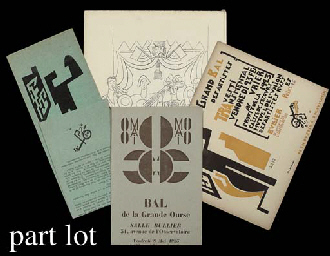



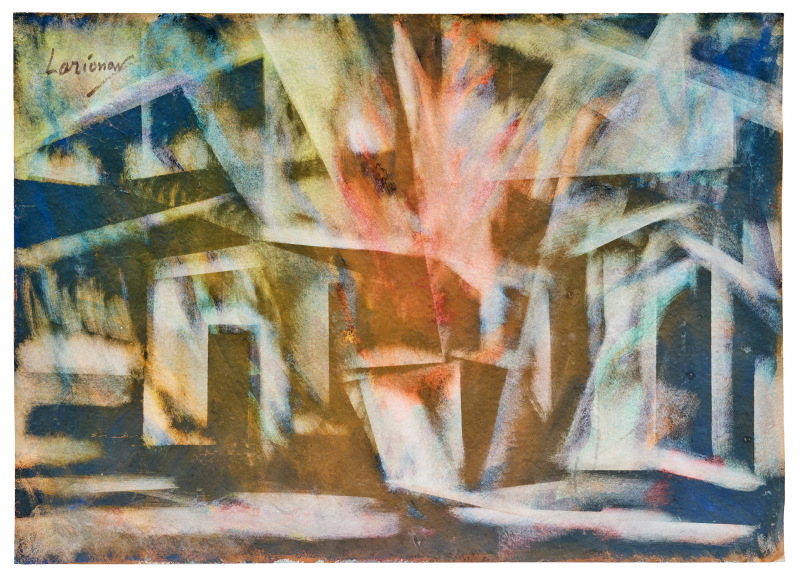
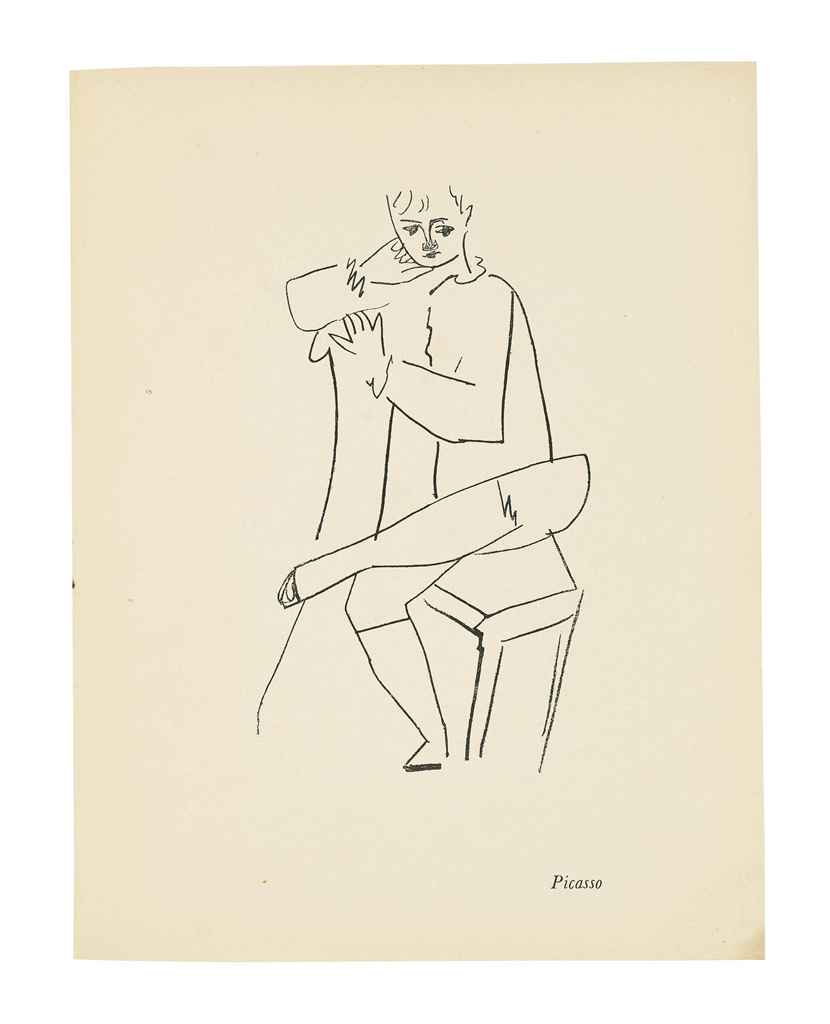



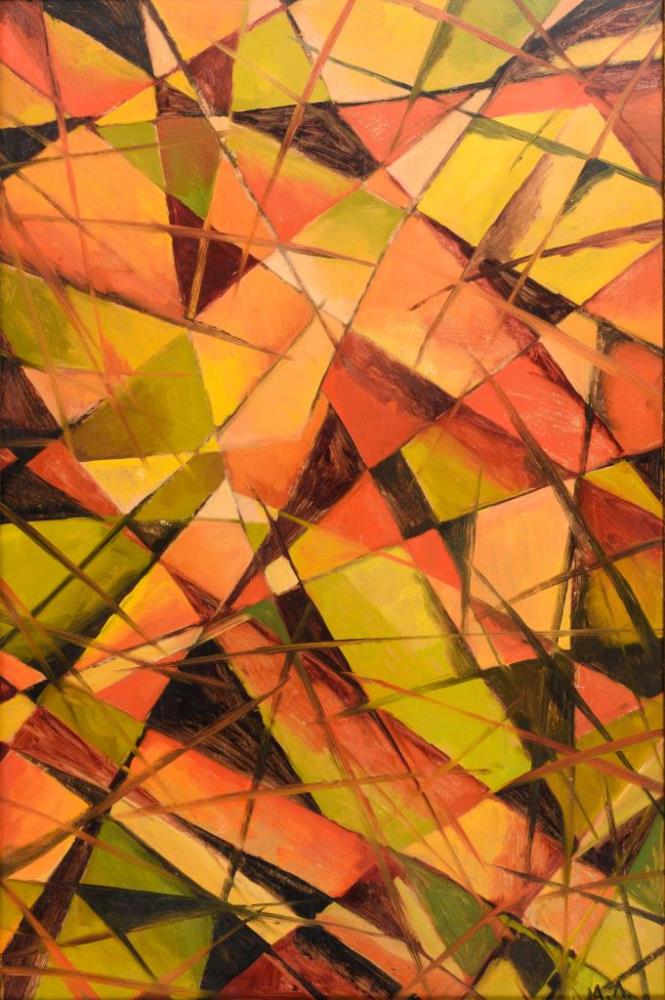
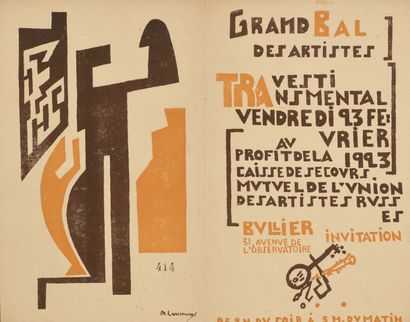
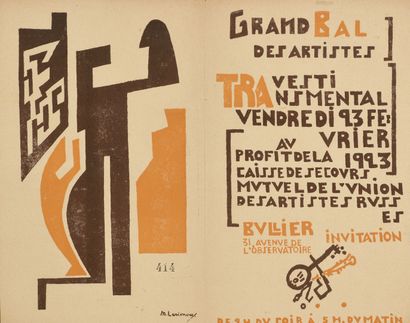
Try LotSearch and its premium features for 7 days - without any costs!
Be notified automatically about new items in upcoming auctions.
Create an alert